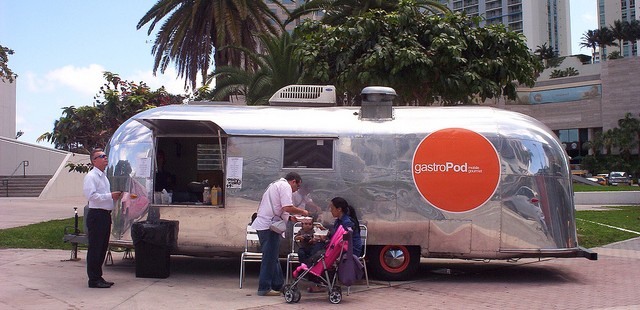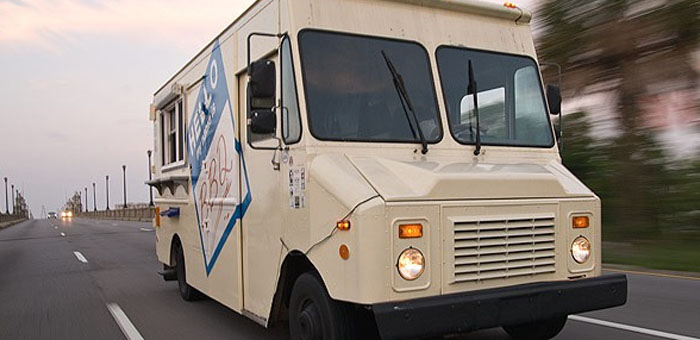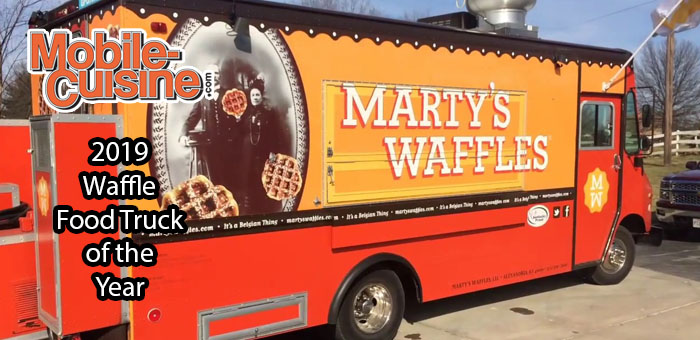Of all the things concession trailer owners do with their vehicles, food truck towing has to be the most misunderstood activity. It seems simple enough; equip your truck or SUV for towing, hitch up and head out to your next event, right? Not so fast. Just because your tow vehicle can tow the trailer doesn’t necessarily mean that it isn’t overloaded or improperly loaded. Or that your vehicle will handle predictably and safely when you’re on the road.
Food Truck Towing Basics
It pays to know the food truck towing basics before you head out to your first food truck event. Whether you purchased your towing vehicle specifically for the purpose of towing your concession trailer.
There is a lot to understand in order to ensure a safe food truck towing experience. From vehicle weight ratings, weighing and weight distribution to hitches, trailer brakes and tire ratings.
Loading Properly When Food Truck Towing
Everything you do to prep your truck for towing is directly related to the amount of load you intend to pull. Let’s assume that you have a truck as a tow vehicle. Although the same rules apply for an SUV, van, even a car if it is rated for towing and is properly equipped.
The first thing you should seek out is the truck’s max trailer rating, or towing capacity. The max trailer rating is the maximum amount of trailer weight your truck is rated to pull. Your truck’s max trailer weight rating is based on a number of criteria, (weight, engine, gear ratio, brake size, tires).
Your owner’s manual may contain information on your truck’s rating. If not, most manufacturers publish “towing guides” that establish the maximum tow rating of your vehicle.
Please note: You cannot upgrade your vehicle’s tow rating. If your truck is not rated high enough to tow your fully loaded trailer, either look at a larger truck or dropping the overall weight of your trailer.
Avoid Overloading
Overloading your truck once in while for a short distance probably won’t cause any damage. However there are other, equally important issues to consider, such as stopping distances and safe handling. Overloading severely degrades your truck’s ability to stop quickly or to handle predictably in an emergency situation. This could cause a serious accident. In the long run, overloading will create pre–mature wear on tires, brakes, transmission, bearings and other components, which at the very least will inflate your vehicle maintenance bills.
In a worst–case scenario, outright component failure and a possible accident can result. That said, it is important to know not only your truck’s towing capacity, but how much the trailer you plan on towing actually weighs. This means how much it will weigh when you tow it.
For example, if your truck is rated to tow 8,000 lbs., don’t set up your food trailer (with kitchen equipment) to weigh 8,000 lbs. or even 7,500 lbs. and expect it to be within your truck’s towing capacity. Once you add water, (8.3 lbs. per gallon) propane (4.5 lbs. per gallon), batteries (50 lbs. or more each) and cooking equipment and supplies, it will almost certainly be too heavy for your truck to pull safely.
How To Properly Weigh Your Trailer
To determine the weight of the trailer in question, first see if it is equipped with a weight label. Trailers built from ’96 and up are equipped with a mandated label that states the Unloaded Vehicle Weight (UVW) for the trailer.
This is the weight of the trailer including factory–installed options, but no freshwater, propane or dealer installed kitchen options/accessories.
If your food trailer was built prior to 1996, you should still be able to obtain a “dry weight” figure somewhere in the trailer. This will provide you with a similar figure. With this information in hand, make a rough calculation of how much weight you plan to carry. Then determine if the total weight exceeds your truck’s rating or not. Try to stay within 10% of the vehicle’s maximum tow rating to ensure adequate performance.
So, if the truck has an 8,000 lb. towing capacity, the ideal maximum trailer weight would be 7,200 lbs., with water, propane, and all supplies on board. If you can take the trailer and your truck to a scale, this is, of course, the best way to determine actual trailer weight.
Even if you can’t load it with all of your supplies, you can weigh it, then factor in the weight of water (based on the freshwater capacity), propane (based on the size of the propane cylinders) and then total up the weight of the kitchen equipment you had installed.
Proper Hitching When Food Truck Towing
Once you have determined that your truck is capable of pulling the trailer, you need to determine which class of hitch your truck is equipped with. Or what it will need to be equipped with in order to tow your food trailer.
Reese lists the various hitch classes and their rated capacities for a weight carrying hitch application as follows:
Class
- I – 2000 lbs
- II – 3,500 lbs
- III – 5,000 lbs
- IV – 12,000 lbs
- V – 13,000 lbs
For really heavy loads, you’ll need a fifth wheel or a goose neck hitch. These hitch systems both mount in the bed of the truck. The fifth wheel has the hitch saddle in the bed and a hitch pin on the trailer. The goose neck uses a hitch ball in the bed of the truck, and the coupler is on the front of the trailer.
These hitches provide the greatest amount of stability because the pivot point of the truck and trailer is moved forward. This prevents the trailer from “wagging” the tow vehicle the way a travel trailer can.
The Bottom Line
Food truck towing isn’t as easy as merely towing around a trailer on the back of your truck. Understanding weight limits and using the correct hitch and hitch equipment are the keys to safe food truck towing for your mobile food business. Use this article to help you understand the basics. Don’t risk an accident which could kill someone or at a minimum, keep your mobile food business off the road.
Share your thoughts on this topic in the comment section, our food truck forum or social media. Facebook | Twitter




